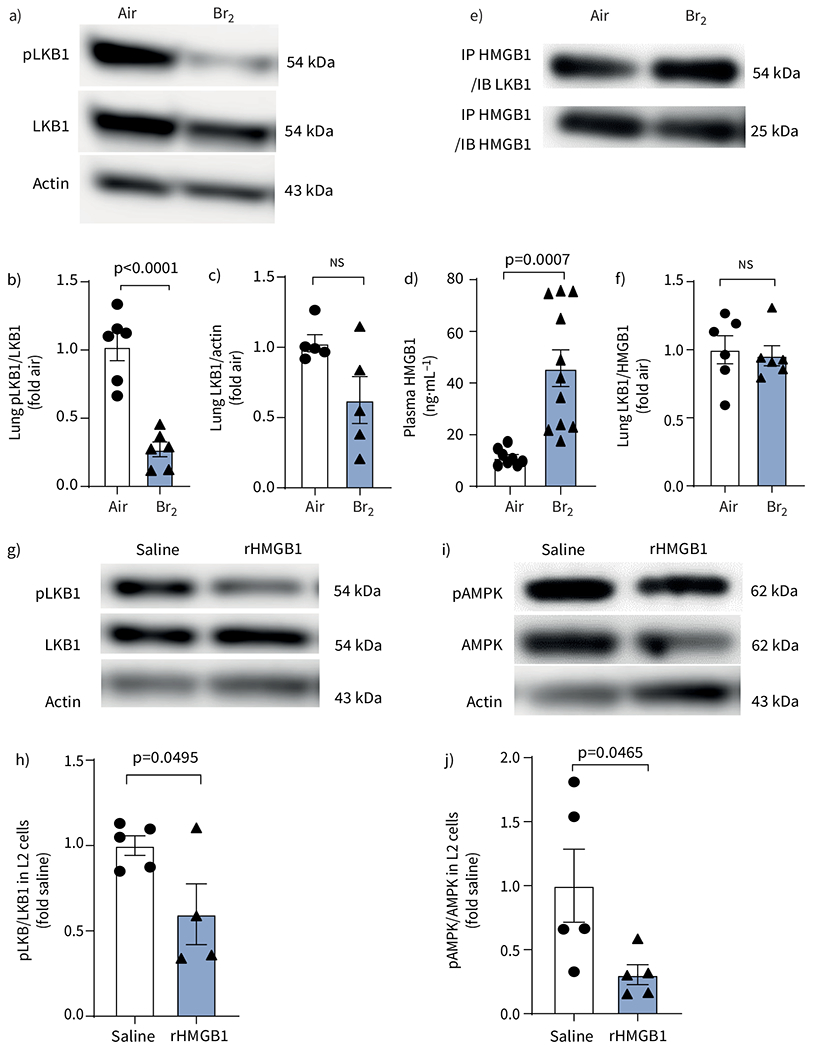FIGURE 4.

Phosphorylated liver kinase B1 (pLKB1) is decreased in lungs and high mobility group box 1 (HMGB1) is increased in plasma in Br2-exposed mice. Effect of exogenous HMGB1 on LKB1 and AMP-activated protein kinase (AMPK) signalling. a) Representative Western blot images of pLKB1 and total LKB1 levels and b, c) summarised pLKB1 to total LKB1 ratio demonstrated that pLKB1 levels (b) and total LKB1 levels (c) were significantly decreased in the lungs of mice at 24 h post Br2 exposure. d) ELISA showed that Br2-exposed mice had significantly higher levels of HMGB1. e) Representative Western blots and f) quantitative analysis from immunoprecipitation, using an antibody to HMGB1 and then pull down protein immunoblotted for LKB1, showed that LKB1 interacts with HMGB1 and forms a complex in mice lung tissue. Data are presented as mean±sem, n=5–7. Significance was determined by unpaired two-tailed t-test. g–j) The ratio of pLKB1 to total LKB1 (g, h) and phosphorylated AMPK (pAMPK) to total AMPK (i, j) in rat alveolar type II epithelial (L2) cells showed that the levels of pLKB1 and pAMPK were significantly decreased after incubation with recombinant HMGB1 (rHMGB1) protein at 10 μg·mL−1 for 24 h. Data are presented as mean±sem, n=6 independent experiments. Significance was determined by unpaired two-tailed t-test. Fold air/saline in b, c, f, h, j indicates the change relative to the air/saline control.
